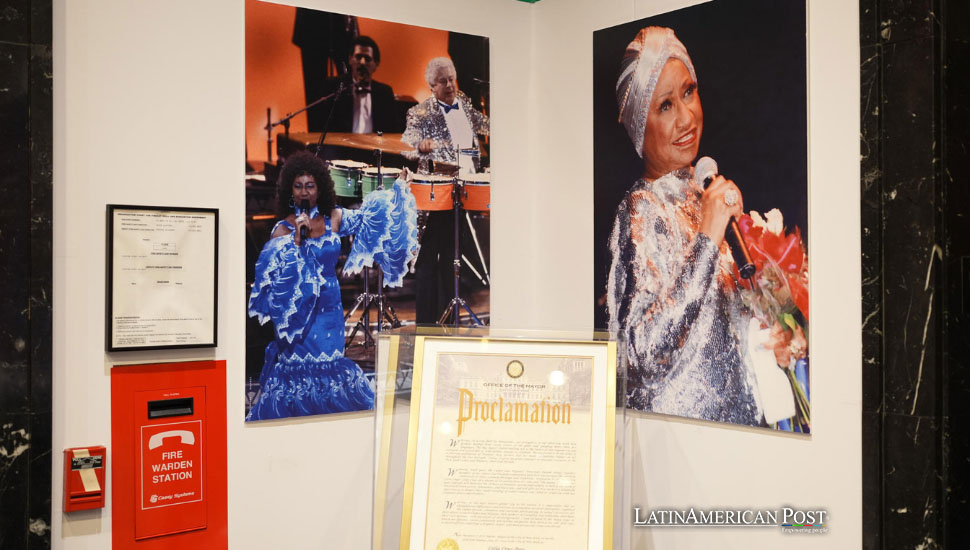Icons That Shaped Latin Music in the U.S

From salsa to Tejano, Latin music has been shaped by a remarkable group of artists whose influence in the U.S. continues long after their time. As Billboard celebrates these legends, their contributions to music and culture remain as powerful as ever.
Celia Cruz: The Queen of Salsa Still Reigns Supreme
More than two decades after her passing, Celia Cruz remains a towering figure in Latin music. Known as the Queen of Salsa, her infectious energy, flamboyant fashion, and unmistakable voice made her one of the most recognizable and influential Afro-Latin artists of the 20th century. Born in Cuba, Cruz’s rise to global fame began when she became the lead singer of La Sonora Matancera, one of the island’s most famous orchestras.
Her groundbreaking accomplishments underscore Cruz’s importance to Latin music. In 2024, she became the first Afro-Latina featured in a U.S. quarter, part of the American Women Quarters Program. The honor reflects her contributions not just to music but to culture as a whole, proving her legacy endures long after she died in 2003.
Cruz’s hits like “Quimbara” and “Guantanamera” remain staples of salsa music, heard across Latin America and beyond. As Billboard points out in its interviews, her influence stretches far and wide. Contemporary Afro-Latin artists, such as Amara La Negra and Goyo from ChocQuibTown, cite Cruz as an essential inspiration, praising her for embracing her Afro-Latina identity and paving the way for others.
Cruz saw significant success on the charts. In 2003, “Ríe y Llora” became her first No. 1 hit on Tropical Airplay, a title that topped the chart for 11 consecutive weeks. Her posthumous album, Regalo del Alma, also reached No. 1 on Top Latin Albums, further cementing her place as a legend.
Ariel Camacho and the Rise of Regional Mexican Music
The story of Ariel Camacho is tragic, but his brief career continues to impact regional Mexican music profoundly. Camacho was only 22 when he died in a car accident in 2015. Still, in that short time, he managed to influence an entire generation of artists, including Natanael Cano, Junior H, and Christian Nodal.
Camacho’s sound, which emphasized traditional sierreño music with a focus on acoustic guitar and heartfelt lyrics, has become the blueprint for today’s corridos tumbados and regional Mexican movements. Christian Nodal told Billboard, “Ariel showed us that you could achieve your dreams if you put your heart into it. He was just a guy with his guitar, but he invited us all to dream big.”
Although his career was cut short, Camacho made his mark on the charts. His romantic ballad “Ya Lo Superé” was his first entry on Regional Mexican Airplay, peaking at No. 32. While his life was brief, Camacho’s music continues to inspire the younger generation of Mexican artists, ensuring his legacy remains strong within regional Mexican music.
Timeless Voices: Antonio Aguilar and Armando Manzanero’s Lasting Influence
Another giant in Latin music, Antonio Aguilar, was not just a mariachi singer but a film star and icon who helped popularize Mexican ranchera music across Latin America and the United States. Born in Zacatecas, Mexico, Aguilar recorded some of the most beloved ranchera songs, including “Un Puño de Tierra” and “Por Una Mujer Casada.” He also blended genres by incorporating tamborazo, a brass-heavy style similar to banda, into his music.
Aguilar’s influence on the charts is as impressive as his cultural legacy. Long after his passing, his album Mis Número 1… Mis Tesoros reached No. 26 on Top Latin Albums in 2015, proving his music resonates with audiences today.
Another legendary figure, Armando Manzanero, was one of Mexico’s most remarkable songwriters. Known for composing over 400 songs, including timeless boleros like “Somos Novios” and “Contigo Aprendí,” Manzanero’s music transcended borders and genres. His songs have been covered by Frank Sinatra, Andrea Bocelli, and other global icons, demonstrating the universality of his work.
Manzanero’s success extended to the Billboard charts as well. In 1971, he was nominated for a Grammy for co-writing Perry Como’s hit “It’s Impossible,” which peaked in the top 10 on the Billboard Hot 100. His legacy was further celebrated when he received the Premio Billboard a la Trayectoria at the Billboard Latin Music Awards 2020.
Selena Quintanilla: The Eternal Tejano Queen’s Legacy
No discussion of Latin music legends would be complete without Selena Quintanilla, the Queen of Tejano, who redefined Latin music and broke barriers for women in the industry. Selena’s ability to fuse Mexican musical styles with pop, rock, and R&B created a sound that captured the hearts of millions.
Her influence on Tejano music and Latin pop cannot be overstated. Despite her tragic murder at the age of 23 in 1995, Selena’s music continues to dominate the charts and inspire new generations of Latin artists. Songs like “Amor Prohibido,” “Bidi Bidi Bom Bom,” and “Como La Flor” are still widely played, and her legacy only grows with time.
Selena was also a trailblazer in terms of her chart success. With Dreaming of You, she was the first artist to have a mostly Spanish-language album debut at No. 1 on the Billboard 200. Her posthumous single, “Tú Solo Tú,” spent ten weeks atop Hot Latin Songs, proving her continued relevance even after passing.
Beyond the charts, Selena’s cultural impact is undeniable. She broke down barriers for Latina women in the music industry and symbolized the Mexican-American community’s pride. As Billboard reports, her legacy has only strengthened with the years, with tributes, biopics, and new generations of artists continuing to honor her life and work.
Also read: Emerging Latin Artists You Need to Know
The icons of Latin music may no longer be with us, but their influence lives on in the songs, charts, and hearts of fans worldwide. These legends shaped music and entire cultures, from Celia Cruz to Selena Quintanilla. Billboard notes that their impact is felt daily, whether through the chart-topping hits they left behind or the new artists they continue to inspire. Their legacies are timeless, and their contributions to Latin music will be celebrated for generations.




